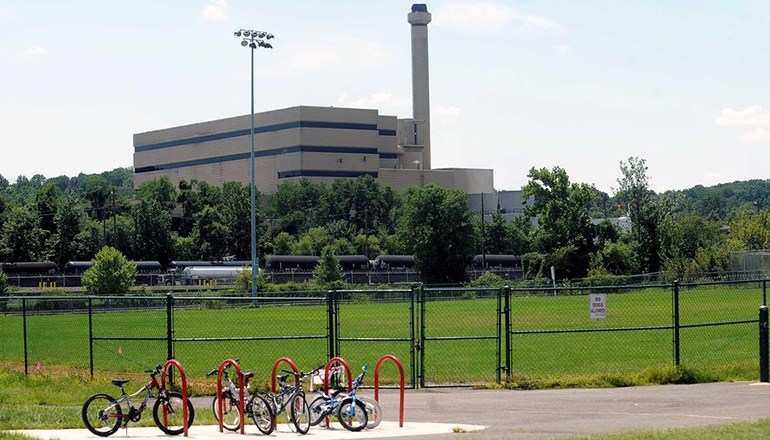For the full year 2019, the company expects adjusted EBITDA within the range of $420 million to $445 million.

Morristown, N.J.-based Covanta Holding Corporation reported that recent volatility in commodity prices has prompted the company to revise its overall 2019 adjusted financial guidance.
During a July 26 call with investors, Covanta Chief Financial Officer Brad Helgeson noted that total revenue for Q2 2019 was $467 million, up $13 million from Q2 2018. Organic growth, excluding the impact of commodities, contributed $8 million and higher waste prices outweighed lower construction revenue in the quarter.
Commodities, however, had a negative impact, as the company saw a $9 million decline in revenue for lower market prices in both energy and metal year-over-year.
Adjusted EBITDA was $94 million for Q2 2019, a $9 million decline compared to the second quarter of 2018. Excluding commodities, adjusted EBITDA declined by $2 million organically and the benefit of higher waste prices was offset by planned maintenance this quarter, explained Helgeson.
“Looking ahead, we expect to show significantly positive year-over-year organic growth in the second half, driven by waste prices and higher value of nonferrous prices as we improve separation during processing,” he said. “We continue to expect organic growth in adjusted EBITDA, excluding commodities, to be within our target range of 3 to 5 percent for the year. The headwind from commodity prices translated directly from revenues in the adjusted EBITDA line.”
For the full year 2019, the company expects adjusted EBITDA within the range of $420 million to $445 million, representing a $20 million reduction from its initial guidance based solely on commodities.
"During the second quarter, our team focused on executing our operating and strategic plans, with solid results," said Covanta President and CEO Stephen J. Jones in a statement. "Our plants are on track for another year of record production. We capitalized on a strong waste market to drive tip fee prices over 5 percent, and we advanced toward our goal of having four new plants in construction in the U.K. While recent volatility in commodity prices is causing us to revise our 2019 financial guidance, our longer-term targets are unchanged as they are not predicated on short-term commodity price movements. Rather, these targets reflect our ability to continue driving underlying organic growth while expanding our business through project development in both new and existing markets."
“While recent commodity price volatility for scrap metal has impacted our results for the year, I am very pleased with how the business is running,” emphasized Jones during the company’s call with investors. “As a result, we’ve lowered our outlook for 2019 with adjusted EBITDA reflecting this specific impact. Our existing guide of free cash flow is unchanged. I want to emphasize that this change is only related to recent movements in commodity prices.”
Here are some additional highlights from Q2 2019:
Q2 results are in line with the operational plan, with full-year outlook for plant production and maintenance on track. Jones emphasized during the call that the company’s core business is “performing as well as it ever has, and we continue advancing on our long-term strategic growth objectives.”
Covanta completed divestiture of its Springfield, Mass., and Pittsfield, Mass., facilities.
Energy-from-waste (EfW) tip fee prices were up more than 5 percent in Q2 2019 on a same-store basis. The company expects 4 percent full-year growth.
EfW profiled waste revenue was up more than 8 percent excluding divestitures.
“During the quarter, we processed 5.4 million tons of waste, a 7 percent increase over last year,” said Jones. “As a result of strong plant operations and portfolio, we continue to expect another full year of production record for 2019. Across the board, our outlook for tons processed, energy produced and metals recovered remain squarely in line with the expectations laid out during the year.”
The first half typically carries out a higher level of planned maintenance activity, noted Jones. Consistent with that, Covanta has completed almost 60 percent of its expected maintenance for 2019.
Covanta saw continued growth in metal recovery and made technology investments to drive improved non-ferrous realized prices.
The company reported a softer but stabilizing commodity price outlook. Ferrous prices were lower due to industry de-stocking, and energy prices were lower on increasing natural gas production and moderate weather.
The company is also advancing U.K. development projects. While there are no major project developments this quarter, Covanta currently has two plants in construction: Rookery South Energy Recovery Facility in Bedfordshire, England, and Earls Gate Energy Centre, in Grangemouth, Scotland. “In both cases, we are now in the civil construction stage,” noted Jones. “Construction is proceeding on plan, and as a reminder, we expect commercial operations in 2022.”
Q2 2019 drivers versus Q2 2018 for maintenance and operating expenses included planned maintenance schedule, and the Palm Beach, Fla., facility drove increase in maintenance spend, according to the company. The company reported higher other plant operating expense related to Palm Beach and the Manhattan Marine Transfer Station (MTS).
Transactions added $13 million to revenue in the quarter with the September 2018 acquisition of the Palm Beach waste-to-energy operations and the 2019 Q1 startup of the Manhattan Marine Transfer Station. Long-term contract transitions added $1 million for the quarter.
Last quarter, Jones said he announced that Covanta agreed to divest its Springfield and Pittsfield, Mass., facilities as part of the free optimization program. “In May, we completed this transaction,” he said during the call. “We will continue to review our fleets and assets for opportunities to improve performance whether contractually or by other means. I don’t expect we will be announcing any further reductions in our portfolio in the near term.”
“As solid waste contracts end, we increasingly have opportunities to reset with higher market prices,” added Jones. “This quarter, we successfully re-contracted with two important and long-term customers—Boston and Philadelphia—for contracts through 2024 and 2025, respectively. We will enjoy price levels higher than previous levels for both of these projects. We now expect full-year, same-store tip fee pricing to grow more than 4 percent in 2019.”
About the Author(s)
You May Also Like




